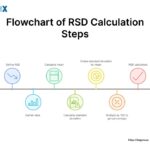Understanding and comparing data sets is crucial for drawing meaningful conclusions. This article explores various graphical methods, including dot plots, back-to-back stemplots, parallel boxplots, and double bar charts, to effectively describe and compare data sets by focusing on key features like center, spread, shape, and unusual features.
Key Features for Data Set Comparison
When comparing data sets, four crucial features help paint a comprehensive picture:
- Center: Represents the midpoint of the data, where roughly half the values lie on either side. This can be visualized as the middle point on a graph.
- Spread (Variability): Describes the range over which the data is distributed. A wider range indicates greater variability, while a clustered range signifies less variability.
- Shape: Characterizes the distribution’s form, including symmetry, skewness (leaning towards one side), the number of peaks (modes), and overall pattern.
- Unusual Features: Highlights any gaps (areas lacking data points) or outliers (values significantly different from the rest). These can indicate errors or unique data points requiring further investigation.
Visualizing Data Set Comparisons: Graphical Methods
Several graphical methods facilitate effective data set comparison:
Dot Plots
Dot plots visually represent data points as dots along a number line. When comparing data sets, aligning dot plots vertically using the same scale allows for easy observation of differences in center, spread, and shape. For instance, comparing pet ownership in two neighborhoods might reveal differences in average pet ownership and the distribution range.
Back-to-Back Stemplots
Back-to-back stemplots provide a mirrored view of two data sets sharing a common stem (central column). Leaves (individual data points) branch out on either side, enabling direct comparison of distributions. This method effectively reveals differences in center, spread, and overall shape. Comparing cash carried by teenage boys and girls could showcase differences in median amounts and distribution variability.
Parallel Boxplots
Parallel boxplots, also known as side-by-side boxplots, summarize key statistics (median, quartiles, range) of two or more data sets on a single chart. This visualization highlights differences in center, spread, and the presence of outliers. Comparing recovery times between a treatment and control group in a medical study might reveal the treatment’s impact on median recovery time and data variability.
Double Bar Charts
Double bar charts present two bars side-by-side for each category, enabling comparison of two different values within the same category. For example, comparing customer satisfaction ratings for different car brands by gender can reveal preferences and variations between male and female respondents.
Conclusion: Making Sense of Data through Comparison
Describing and comparing data sets is essential for extracting valuable insights and making informed decisions. Utilizing various graphical methods allows for a comprehensive understanding of data distributions, central tendencies, variability, and potential anomalies. By focusing on key features like center, spread, shape, and unusual features, one can effectively analyze and interpret data to draw meaningful conclusions.

